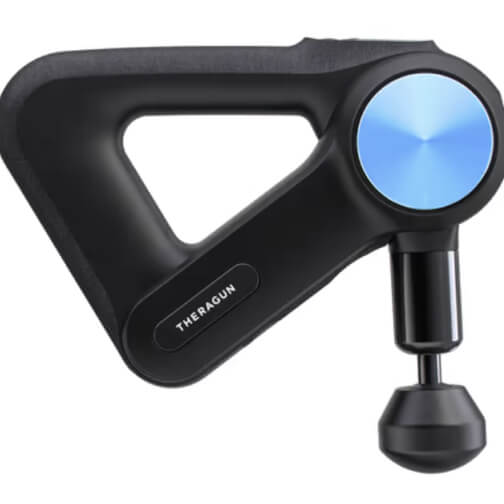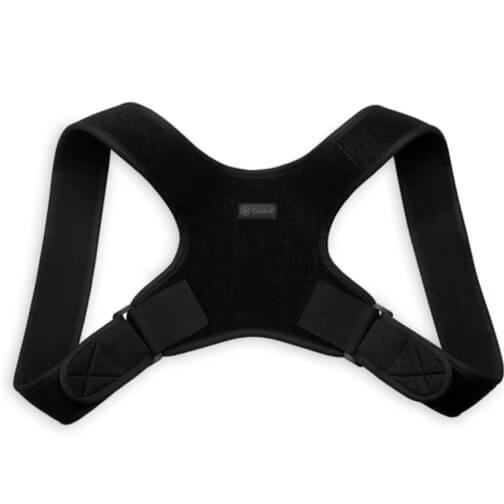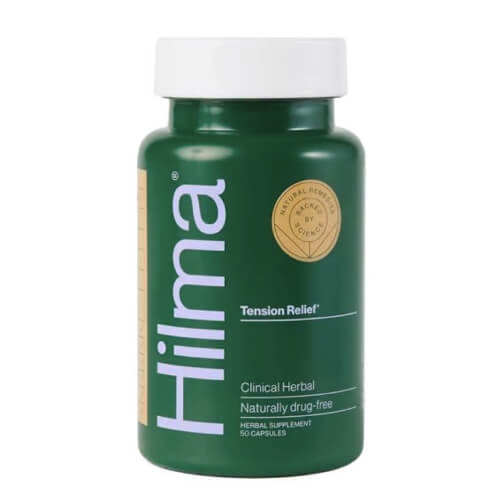

Hypothesis and Emerging Research
Preventing Screen-Time-Induced Headaches and Neck Pain
Preventing Screen-Time-Induced
Headaches and Neck Pain
May 19, 2022

Working at a computer all day can leave us feeling exhausted and with head and neck pain. Happily, there are some relatively simple ways to prevent this. Erik Peper, PhD, a professor in the Institute for Holistic Health Studies at San Francisco State University, has figured out some of the reasons for tech stress. And he’s come up with research-backed solutions that have helped his students and other guinea pigs. There’s more on this subject in a book Peper coauthored: Tech Stress: How Technology Is Hijacking Our Lives, Strategies for Coping, and Pragmatic Ergonomics.
Posture and Breathing Tips to Prevent Aches and Pain from Too Much Screen Time
By Erik Peper, PhD, as told to goop
Common themes for people who work in front of screens are neck and shoulder problems, eye discomfort, worsening vision, and a sense of exhaustion and tiredness after a while. And many people report headaches. My approach is to find out what the triggers are and find holistic ways to deal with them. I published a case study of a 32-year-old woman who had had chronic headaches since she was 18. She was able to resolve her headaches and back pain with simple practices.
Why Headache and Neck Pain? What Are We Doing Wrong?
To see what people are doing wrong, here’s a little experiential practice to do. Put your head slightly forward like you are craning your neck to look at something. Keeping your head forward, tilt your head back like you’re looking up a little until you’re scrunching your neck. That’s the position people do without knowing it, often because we can’t see the screen well enough. We did a study that showed that if people do this for 30 seconds, they tense their trapezius muscles and report stiff necks and pain. Changing your posture and breathing can help prevent these symptoms.
“
Sometimes it’s how you’re holding yourself that unknowingly causes your body to create pain or dysfunction.
”
There are many causes and different types of headaches. People may get headaches when they drink red wine or eat cheeses. Sometimes treatment can be a chiropractic adjustment or medications to suppress the pain. On the other hand, sometimes it’s how you’re holding yourself that unknowingly causes your body to create pain or dysfunction. I ask, How can you move, sit, and work in different ways?
How to Prevent Headaches
1.
Learn to not hold tension in the neck and shoulders.
If you can identify what causes you to become tense, what your stressors are—time, emergencies, money, roommates, family—and learn to be aware of them, you’ll do better. Think of when you are scared—put your body in that position. As you do that, feel how your neck tightens. Many symptoms may disappear if you can manage to make yourself feel a little safer. Learn to relax the neck and shoulders. I teach my students progressive relaxation: Tighten muscles and then let go.
“
Drink lots of water so you have to pee all the time.
”
2.
Interrupt chronic low-level muscle tension and move.
When I walk, I tighten muscles to push off, and then I relax them. But working at the computer is static, and the muscles are held chronically at very low levels of tension. It’s boring advice, but get up and move around. Put a timer on your screen or use a free app called Stretch Break. Drink lots of water so you have to pee all the time.
We did a training program with employees at San Francisco State. I’ll never forget this one man. He said, “That’s not a problem for me. I’m perfectly healthy.” We finally persuaded him to do movement breaks. He came back the following week with this sort of embarrassed smile on his face. He said, “Erik, you’re right. There’s life after five.” What he meant was that he was not as exhausted by the end of the day. The quickest way to reduce fatigue is to get up and move around.
Stretch, wiggle, and even skip in place, and it may be helpful to look upward. We did a study on interrupting people at work and getting them to take exercise breaks. We compared skipping in place versus slouched walking. When they skipped, their energy level went way up. If they slouched and walked, their energy went down.
“
If you use a laptop, almost by definition you’ll get into trouble.
”
3.
Improve ergonomics.
Some companies have an ergonomist who arranges the screens and keyboards at their offices in the optimum way. At home, most people use laptops. If you use a laptop, almost by definition you’ll get into trouble. Either the screen is too low or the keyboard is too high. I see most of our students using laptops in positions that increase neck and shoulder tension.
Ideally you want to sit comfortably. You want to look straight ahead, more or less, so you don’t have to tilt your head down to look. That means that the top of the screen should be at eyebrow level and the keyboard should almost be on your lap. That’s simple ergonomics. What people don’t realize is that if the keyboard is too high, you raise your shoulders a little bit. You have no idea you’re doing that.
The solution is to use a remote keyboard or a separate monitor.
4.
Improve posture.
Why do people sit slouched? They slouch because of hopeless thoughts. They slouch if they’re tired. They slouch because of their ergonomic setup. What I would recommend is, don’t just sit up. Wiggle, move, and even get up for a moment. If you have identified that there was a concurrence of slouching with self-critical thoughts, get up and do some cognitive reframing. Say, “How can I change those thoughts?”
I like the Upright GO, which is a little posture device you put on your spine. After you calibrate it, it works superbly. The moment you slouch, it vibrates.
5.
Breathe lower in the body.
Posture and breathing are related. Try sitting collapsed with a rounded back, as many people do when looking at a computer or cell phone. Take a couple of breaths and observe your breathing. Now make yourself tall. Almost arch your lower back and be tall and straight. Your neck goes back. Your head goes up. Breathe. Which body position allowed you to breathe easier? It’s sitting up. And the breath goes more easily into your belly when you’re sitting up.
Belly breathing is a kind of stress management tool. If you allow your belly to move, it means you feel safe, because when you feel fearful, you tend to tighten up. Breathing lower and slower is part of many meditative techniques. Also, it is going to reduce the pressure on your stomach, which is helpful for acid reflux.
6.
Relieve stressed eyes.
People tend to look at their screen very close up. When you do that, you get eye strain, and it often leads to tightness in the neck. Try increasing the magnification and sitting back a little.
Try this exercise: Put your hand in front of your face, nearly at your nose, and focus on the life line on your hand. When you’re looking very closely at your hand, you can feel the tension in your eyes. This is called near-visual stress. Now look into the distance. You can feel your eyes relax; the eyes can relax only when they’re looking into the distance.
When working at a screen, take a momentary break. Look at something far in the distance. Look at the treetops. Look at the clouds if possible.
Looking at screens all the time is the reason many people are myopic (nearsighted). There’s been an increase in myopia in children since the pandemic. Likely because of increased screen time, their eyes never focus in the distance and they are developing a focal plane that is only close up.
7.
Touch.
And any kind of touch is great, even using it on your body yourself. If you want to wake up quickly, pat your own arms. Pat the top of your head quickly. All of a sudden you feel this energy and charge.
Editors’ Picks for Desk Jockeys
-
Pholk Beauty
HONEYSUCKLE ROSE FACE MIST
goop, $20It’s all about relaxing, taking a deep breath, and feeling cared for.
SHOP NOW -
Therabody
THERAGUN PRO
goop, $599A powerful percussive massage treatment for yourself.
SHOP NOW -
GAIAM
RESTORE POSTURE CORRECTOR
goop, $20A comfortable little posture nudge.
SHOP NOW -
Hilma
TENSION RELIEF
goop, $17Traditionally valued herbs for tense heads and necks.*
SHOP NOW -
Caddis
Porgy Backstage Glasses
goop, $95Glossy black glasses to block blue light during evening screen time.
SHOP NOW -
GAIAM
EVOLVE BALANCE BOARD
goop, $80A change of position for inspiration or relief.
SHOP NOW
Selected Research from Peper’s CV
How a Chronic Headache Condition Became Resolved with One Session of Breathing and Posture Coaching
Increase or Decrease Depression: How Body Postures Influence Your Energy Level
The Effect of Head and Neck Position on Head Rotation, Cervical Muscle Tension, and Symptoms
Related Content on goop
Erik Peper, PhD, is a professor in the Institute for Holistic Health Studies at San Francisco State University. His most recent book—coauthored with Richard Harvey, PhD, and Nancy Faass, MSW, MPH—is Tech Stress: How Technology Is Hijacking Our Lives, Strategies for Coping, and Pragmatic Ergonomics. Peper has a PhD in psychology from Union Graduate School and a BA from Harvard University. He is president of the Biofeedback Foundation of Europe and a past president of the Association for Applied Psychophysiology and Biofeedback. Peper has carried out extensive research on the psychophysiology of healing, holistic health, and biofeedback and has published numerous scientific articles on these subjects. He also provides consultations for individuals and organizations.
This article is for informational purposes only. It is not, nor is it intended to be, a substitute for professional medical advice, diagnosis, or treatment and should never be relied upon for specific medical advice. To the extent that this article features the advice of physicians or medical practitioners, the views expressed are the views of the cited expert and do not necessarily represent the views of goop.
*These statements have not been evaluated by the Food and Drug Administration. This product is not intended to diagnose, treat, cure, or prevent any disease.
We hope you enjoy the products recommended here. Our goal is to suggest only things we love and think you might, as well. We also like transparency, so, full disclosure: We may collect a share of sales or other compensation if you purchase through the external links on this page (including links to Amazon).







